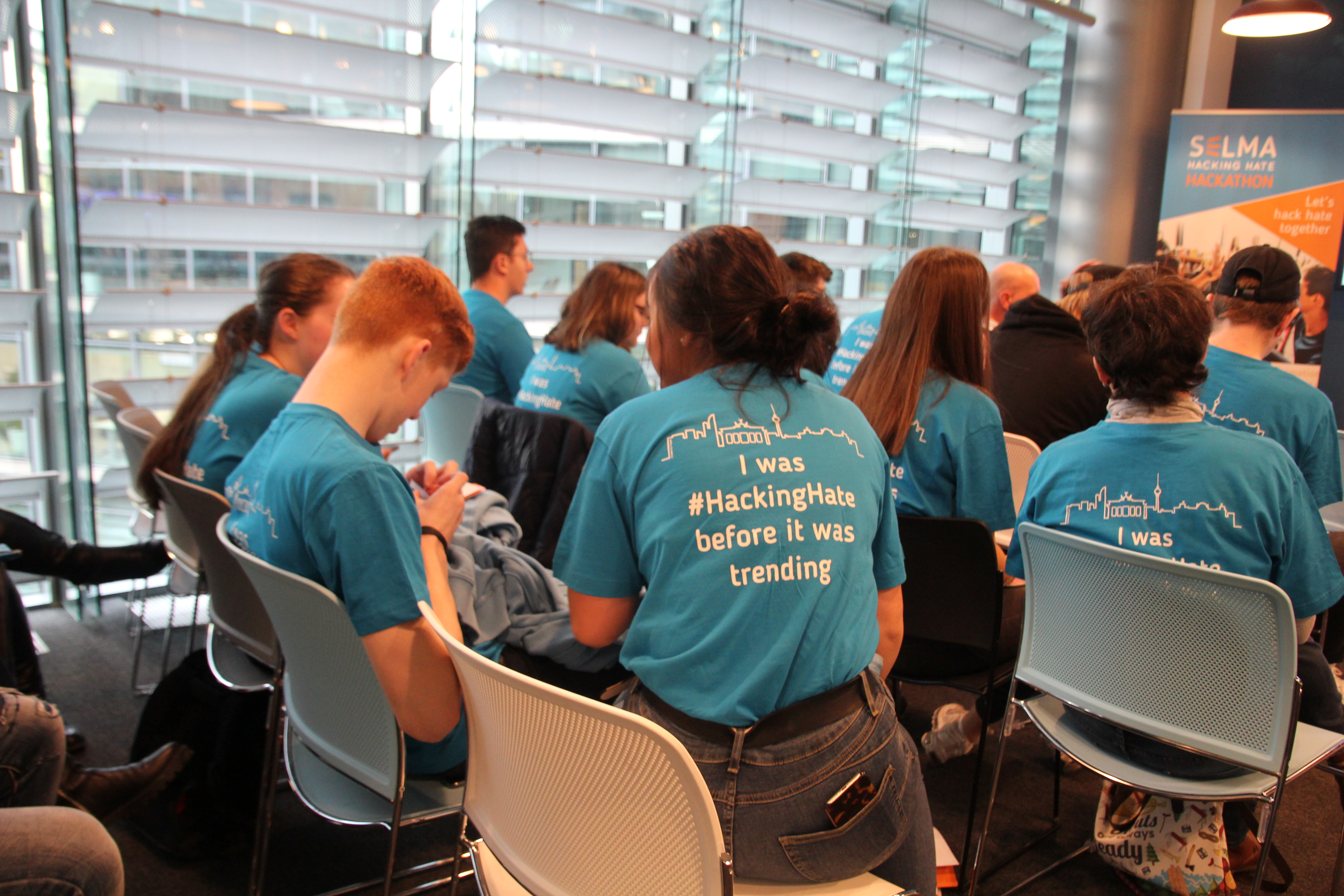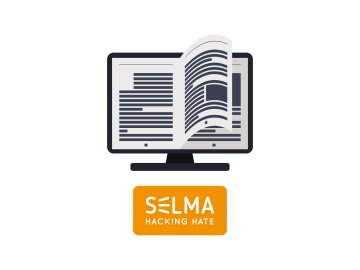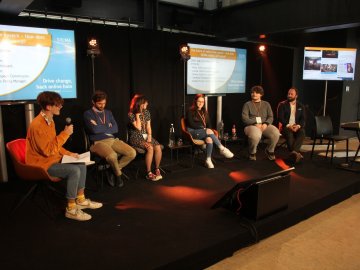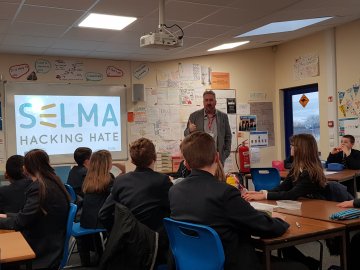Online hate has become a widespread societal issue, and ongoing debates have made it clear that social media platforms have a crucial responsibility to ensure a safe and positive online environment for their users, above all children and young people.
Indeed, social media services are very popular among the latter because they allow them to explore and develop their identity, to connect with peers anywhere and anytime, to stay in touch, to express themselves, and to share experiences, while having fun together.
Online companies have significant means to address and resolve the increasing concerns relating to the spread of hateful rhetoric online by regulating, monitoring, and encouraging their users to report it on their platforms. The SELMA project holds the view that online platforms should follow three core recommendations to adequately prevent and counter online hate speech, which will be described below.
In addition, a number of pathways through the SELMA Toolkit will be presented, illustrating how young people can participate in the development of innovative ideas to prevent or remediate online hate speech. These suggestions can be integrated by online companies in their own education or awareness-raising programmes.
Transparent regulation is key
 Online platforms should be clear and specific in their Terms of Service agreements or Community Guidelines about the harms that their safety policies address, and the consequences in case of policy violation. Once these principles have been established, hate speech policies should also be enforced, with companies devising strategies – drawing upon automated technological systems or human resources and judgement – to identify and remove content violating the rules.
Online platforms should be clear and specific in their Terms of Service agreements or Community Guidelines about the harms that their safety policies address, and the consequences in case of policy violation. Once these principles have been established, hate speech policies should also be enforced, with companies devising strategies – drawing upon automated technological systems or human resources and judgement – to identify and remove content violating the rules.
In addition, acknowledging the deletion of content can further help to support a commitment to transparent and accountable enforcement. A best practice example in this regard is Twitter’s extensive communication efforts around their rules against hateful conduct, including consultation mechanisms with users.
How to make SELMA work – Pathway 2: Spotting and reporting hate online of the SELMA Toolkit comprises a number of activities aiming to give young people a better understanding of the mechanisms of online hate, and how social media platforms features come into play, while offering some alternative solutions and strategies.
Promote counter-narratives
 In cases where online intermediaries deem it inappropriate to remove certain types of offensive content, for instance because it is not illegal in a certain country, they can still help with countering hate speech through different means.
In cases where online intermediaries deem it inappropriate to remove certain types of offensive content, for instance because it is not illegal in a certain country, they can still help with countering hate speech through different means.
In such situations, Google, for example, inserts explanatory advertisements to apologise for the possibly upsetting nature of the content, while ensuring it does not endorse the views expressed, and pointing to alternative sources of information on the topic instead. The company also explored a method using AdWords targeting tools to reach individuals who are sympathetic to ISIS and redirect them to curated YouTube videos debunking its terrorist recruiting themes. More information on this initiative can be found in the SELMA research report.
Apart from informative warning signs, online platforms are also well placed to promote and campaign with more positive voices against hate, often in cooperation with civil society organisations, ideally in a language which resonates with youth audiences. One high-profile initiative in that sense is YouTube’s Creators for Change, “an ongoing global initiative that spotlights inspirational Creators who use YouTube to foster productive conversations around tough issues and make a positive impact on the world”.
How to make SELMA work – Pathway 1: Peer mentoring – campaign focus of the SELMA Toolkit allows young people to understand what hate speech is, to place it in context and to be able to define it. In addition, it comprises activities where they must raise awareness and produce their own counter-narrative campaigns, while learning to plan actions together with their peers.
Encourage civic behaviours online
 Online companies can seek to go further, educating and empowering their users to respond to hate speech on their platforms and sites while creating contexts in which users feel compelled to reflect on their own rights and responsibilities. This happens through the setting up of clear community guidelines and reporting tools and processes, but also through architectural choices which discourage speakers from fleeing responsibility for their own hateful expressions.
Online companies can seek to go further, educating and empowering their users to respond to hate speech on their platforms and sites while creating contexts in which users feel compelled to reflect on their own rights and responsibilities. This happens through the setting up of clear community guidelines and reporting tools and processes, but also through architectural choices which discourage speakers from fleeing responsibility for their own hateful expressions.
For instance, Instagram recently rolled out a new feature powered by AI that notifies people when their comment may be considered offensive before it is posted, giving them a chance to reflect and undo their comment.
How to make SELMA work – Pathway 3: From mobilisation to movement of the SELMA Toolkit will help young people to understand why the media portray stereotypes and may help to promote hate. In addition, the teenagers will learn how messages are spread and how they can turn this around to mobilise their peers, as well as to build a community of supporters beyond their own community and effect change on a wider scale.
Other lines of action
The above-mentioned pathways are by no means restrictive; SELMA has been designed as an open and flexible framework which gives you as much flexibility as you want or need. You can choose your own journey by designing your own pathway. Apart from the Toolkit, the SELMA project also offers lines of action which may relevant to industry stakeholders, such as:
- Prototyping for change – A detailed outline of the SELMA “Hacking Hate” hackathon, which will hopefully inspire social media providers – and other public and private stakeholders – to more actively draw upon the views and creativity of young people when prototyping for change.
- Positive online content – When designing their platforms and services, online companies need to aim for an online environment in which users – especially the younger ones – are empowered to react to hate speech, while having enjoyable, respectful, and creative experiences. To achieve this, the SELMA project has created a “positive content and services” revised checklist of important criteria to take into consideration.
For more information, visit the SELMA Toolkit’s guide “How to make SELMA work for you if you come from an industry perspective”.






